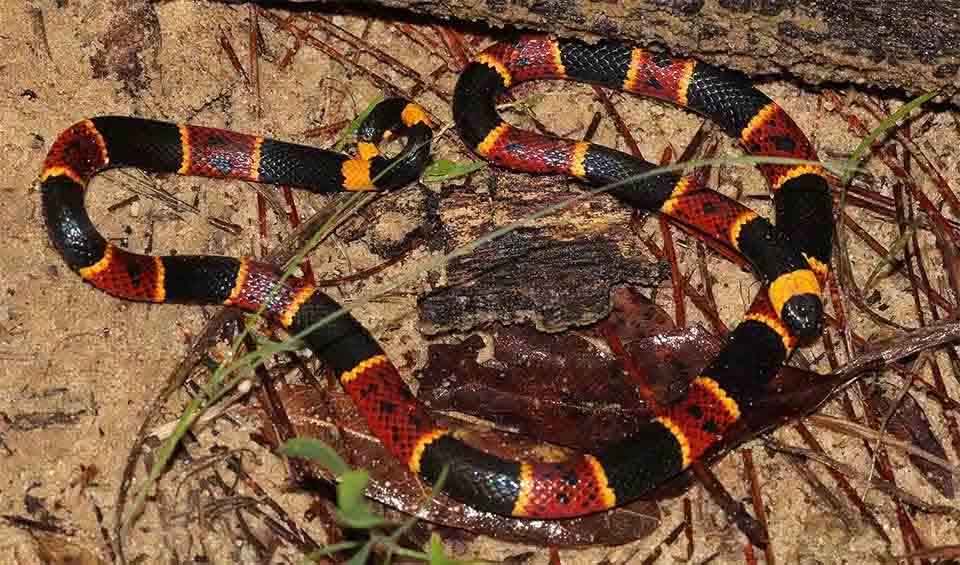Micrurus – Coral snakes
Cloaked in a striking pattern of vibrant red, yellow, and black bands, these serpents possess a venomous bite that can be fatal to humans
These slender, brightly colored snakes are known for their distinctive bands of red, yellow (or white), and black, which warn potential predators and curious humans alike. Although there are look-alike species with similar color patterns, a common rhyme, “red touch yellow, kill a fellow; red touch black, venom lack,” helps distinguish the venomous coral snakes from their harmless counterparts.
Coral snakes are relatively small compared to other venomous snakes. On average, they measure between 45 and 50 centimeters (18 and 20 inches) in length, but some species can reach up to 1 meter (3 feet). Despite their size, they pack a powerful punch with their venom, the second strongest of all snake families. However, their method of venom delivery is not as efficient as that of vipers or cobras. Coral snakes have small, fixed fangs located at the front of the mouth, and they must often latch onto their prey and chew to inject a significant amount of venom.
Fortunately for us, most coral snake bites on humans do not result in a high volume of venom transfer, and fatalities are rare. Nevertheless, any bite from a coral snake should be treated as a severe medical emergency and require immediate attention.
Coral snakes are secretive creatures. They spend much of their time hidden away in caves, under rocks, or within leaf litter on the forest floor. Their primary diet consists of other small reptiles, particularly lizards and smooth-scaled snakes. They have a highly specialized diet and hunting technique, using their venom to subdue their slippery prey quickly.
Species in this genus
Eastern coral snake
A relative of the cobra and black mamba with the second strongest venom of any snake


